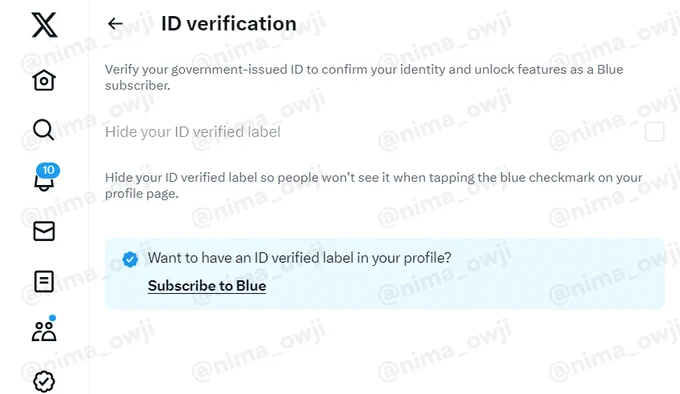While X’s XBlue subscription offering has become more of an indicator of support for Elon Musk than anything else in the app, could it eventually become a more useful tool for combating bots and spam, as per its original stated intention?
That could still become a bigger focus, with X experimenting with new ID verification elements, that would provide more assurance in the app.

As you can see in this example shared by app researcher Nima Owji, X is testing a new element that would enable XBlue subscribers to verify their government-issued ID.
But what’s most interesting in this context is that the wording suggests that XBlue subscribers might eventually need to provide government-ID confirmation to unlock all of the XBlue features.
At present, you don’t need to provide any official ID documents to get verified in the app, you just need a phone number and a payment option, and X will accept that you’re a real person. Which is obviously not a fool-proof ID method, but X’s view is that “payment verification” is currently enough of a disincentive for bot and spam boosters, as it effectively prices them out of the market, at least in terms of getting maximum post reach.
X has also put limits on the amount of DMs that non-subscribers can send, and defaulted all users to receiving DMs from subscribers only, which further restricts a non-paying user’s capacity to spam others in the app. But it’s still possible for scammers to set up armies of fake free accounts, and push whatever they want across the X platform. And with only a fraction of the app’s audience paying for XBlue, its full effects as a bot-battling tool are not as impactful as they could be.
But if X sought to make users link their government ID to their account, that could set the bar even higher, and further limit the impact of spammers and trolls, at least via verified profiles.
And if X then implemented further restrictions, like making all users provide government-issued ID to keep using the app, that would effectively eliminate bot spam entirely, aligning with one of Elon Musk’s key intentions for the app.
But that would also require a lot of manual checking on X’s behalf, which is partly why it’s chosen to go with paid verification over ID checks. Because with 80% fewer staff, X simply doesn’t have the capacity to manually check through people’s ID documents to confirm that they are who they say, though it could do this with X subscribers, given that less than 0.5% of the app’s users are paying for this service.
The question then is would it have any real impact?
For sure, it would limit the use of verified profiles for spam, which could actually be a significant shift, while it would also likely reduce the misuse of verified profiles for impersonation scams or the like, given that they could be linked back to an actual person.
At the same time, many X users would likely be unhappy at having to provide official ID verification, and that may be the backlash that it has to deal with to implement any such process.
But it could be a step in the right direction, and towards addressing one of the main focal points of Elon’s purchase of the app.
Really, ID checking is the only way to eliminate spam, but it’s just so labor-intensive that no platform is able to do it at an effective enough scale. LinkedIn’s trying out a new approach in the U.S., while Meta requires ID confirmation as part of its Meta Verified service, but no platform has put effective ID verification in place, at scale, as yet.
It doesn’t seem like X can do so either, but maybe, as a means to eliminate misuse by verified accounts, that, in itself, will be enough to combat serious misuse.



